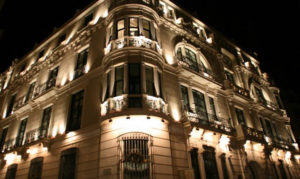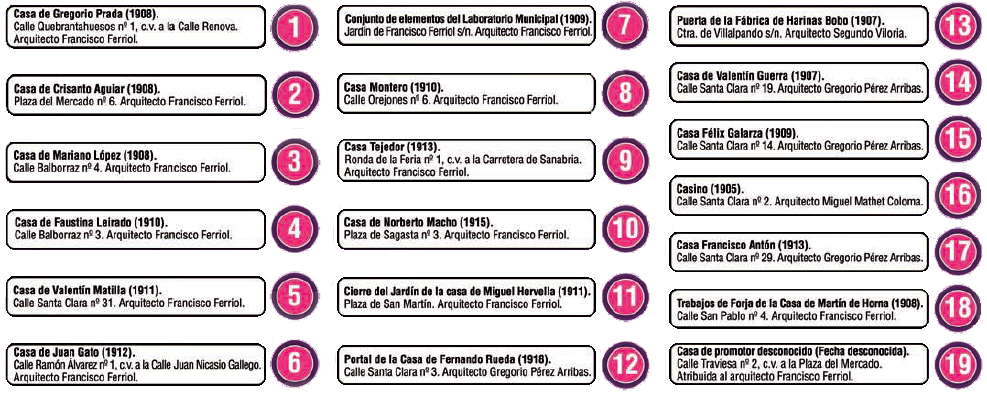Modernism Route

Zamora has experienced important urban and architectural development since the mid-19th century, culminating in the modernist era. The improvement of communications with the arrival of the railroad, interest in extramural expansion after authorizing the destruction of the wall, and the appearance of industry, particularly transformational, triggered the second architectural golden age. A bourgeoisie that imposed its lifestyle, local authorities who were conscious of the importance of improving the city and high-quality master architects all contributed to this splendour.
Consequently, between 1875 and 1930 many eclectic and historic buildings were constructed, as were some industrial buildings and above all, a notable number of modernist buildings. This allowed Zamora to be included in an exclusive group of municipalities that make up the European Modernism Route, since Zamora’s Modernism is on par with that of the great European capitals. As in the other capitals, Zamora’s style is clearly bourgeois and is characterized by the number of curved lines, the combination of materials, the interest in contrasts of colour, its departure from proportion and symmetry and preference for animal and vegetable decoration.
The three variants of Modernism may be found in Zamora. One is the more internationalist, more focused on ornamentation and composition rather than colour.
Examples designed by Gregorio Pérez Arribas are found in Zamora. The second variant is “Sezession,” replete with straight lines, pendulums and circles. The last is Catalan, which had more interest in polychrome, references to medieval styles and whose details showed great subtlety.
The importance of the latter was another of the elements that makes Zamoran Modernism exceptional, since it is one of the few cities in the centre and west of the Iberian Peninsula where a completely modernist architect, licensed by the School of Architecture of Barcelone, would work. It was Francisco Ferriol, disciple and collaborator of Lluís Domènech i Montaner, one of the great champions of this style.
Zamoran Modernist buildings are not isolated cases in an otherwise uninteresting urban fabric. In combination with other eclectic and historic buildings they constitute an extraordinary architectural complex made up of houses, theatres, public and recreational centres, etc.
The final element that makes Zamoran Modernist architecture exceptional is its contribution to the renovation of the historic city. Zamoran Modernism did not develop in suburbs or in outlying areas, but is found in the heart of the city itself. Thus, Modernist architects contributed to old Zamora, dominated until that time by sturdy convent walls and large old houses, in the late 19th century becoming an elegant bourgeois town with tidier streets, welcoming squares and many beautiful residential buildings.
Zamora’s Modernist building map


